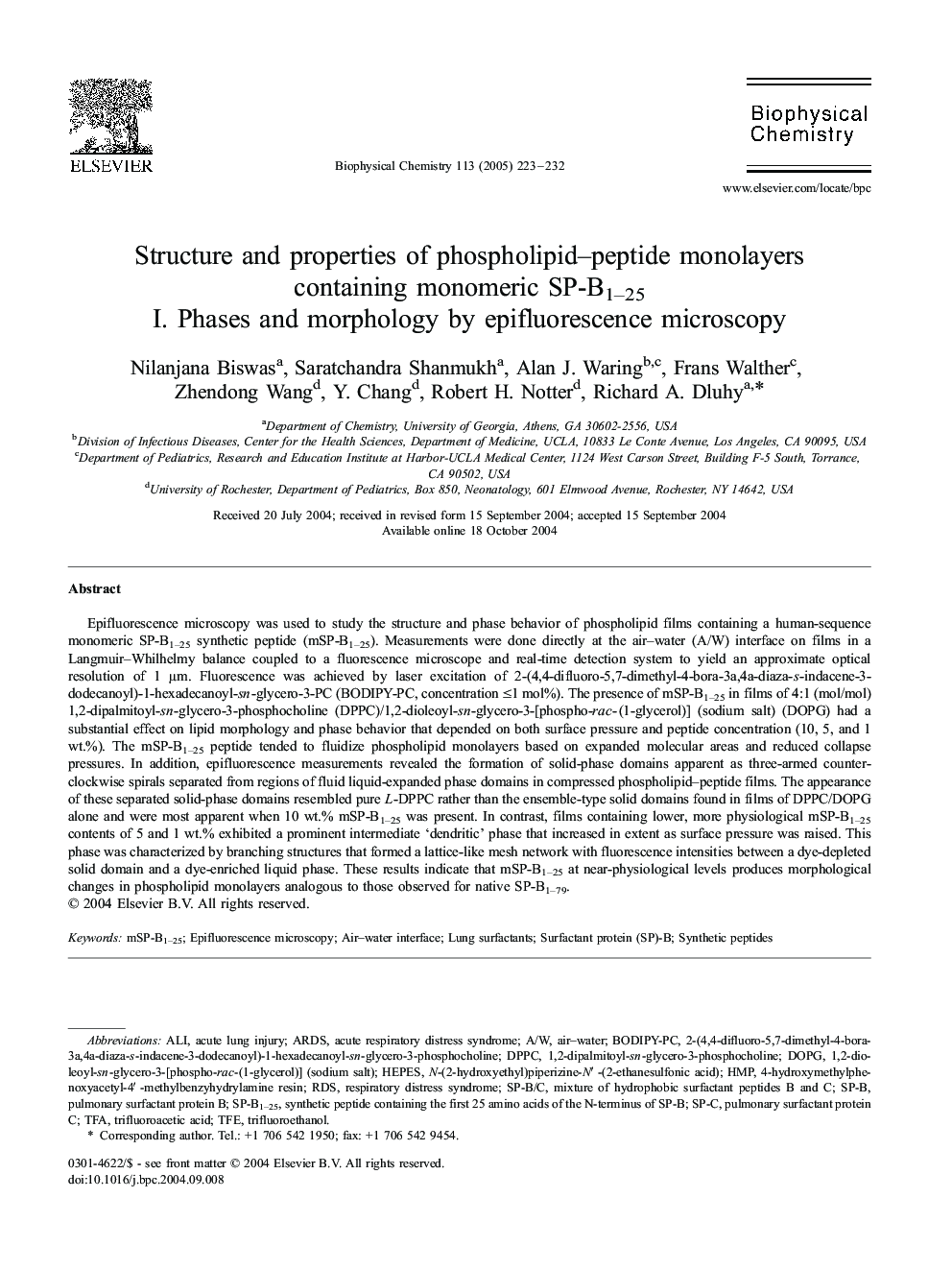| Article ID | Journal | Published Year | Pages | File Type |
|---|---|---|---|---|
| 9573612 | Biophysical Chemistry | 2005 | 10 Pages |
Abstract
Epifluorescence microscopy was used to study the structure and phase behavior of phospholipid films containing a human-sequence monomeric SP-B1-25 synthetic peptide (mSP-B1-25). Measurements were done directly at the air-water (A/W) interface on films in a Langmuir-Whilhelmy balance coupled to a fluorescence microscope and real-time detection system to yield an approximate optical resolution of 1 μm. Fluorescence was achieved by laser excitation of 2-(4,4-difluoro-5,7-dimethyl-4-bora-3a,4a-diaza-s-indacene-3-dodecanoyl)-1-hexadecanoyl-sn-glycero-3-PC (BODIPY-PC, concentration â¤1 mol%). The presence of mSP-B1-25 in films of 4:1 (mol/mol) 1,2-dipalmitoyl-sn-glycero-3-phosphocholine (DPPC)/1,2-dioleoyl-sn-glycero-3-[phospho-rac-(1-glycerol)] (sodium salt) (DOPG) had a substantial effect on lipid morphology and phase behavior that depended on both surface pressure and peptide concentration (10, 5, and 1 wt.%). The mSP-B1-25 peptide tended to fluidize phospholipid monolayers based on expanded molecular areas and reduced collapse pressures. In addition, epifluorescence measurements revealed the formation of solid-phase domains apparent as three-armed counterclockwise spirals separated from regions of fluid liquid-expanded phase domains in compressed phospholipid-peptide films. The appearance of these separated solid-phase domains resembled pure L-DPPC rather than the ensemble-type solid domains found in films of DPPC/DOPG alone and were most apparent when 10 wt.% mSP-B1-25 was present. In contrast, films containing lower, more physiological mSP-B1-25 contents of 5 and 1 wt.% exhibited a prominent intermediate 'dendritic' phase that increased in extent as surface pressure was raised. This phase was characterized by branching structures that formed a lattice-like mesh network with fluorescence intensities between a dye-depleted solid domain and a dye-enriched liquid phase. These results indicate that mSP-B1-25 at near-physiological levels produces morphological changes in phospholipid monolayers analogous to those observed for native SP-B1-79.
Keywords
HEPESSP-CDOPGtrifluoroethanolTFESP-BARDSBodipy-PCRDSHMPTFAA/WDPPC1,2-dipalmitoyl-sn-glycero-3-phosphocholineAir–waterAcute lung injuryTrifluoroacetic acidAliAir–water interfaceRespiratory distress syndromeAcute respiratory distress syndromeLung surfactantsEpifluorescence microscopySynthetic peptides
Related Topics
Physical Sciences and Engineering
Chemistry
Physical and Theoretical Chemistry
Authors
Nilanjana Biswas, Saratchandra Shanmukh, Alan J. Waring, Frans Walther, Zhendong Wang, Y. Chang, Robert H. Notter, Richard A. Dluhy,
